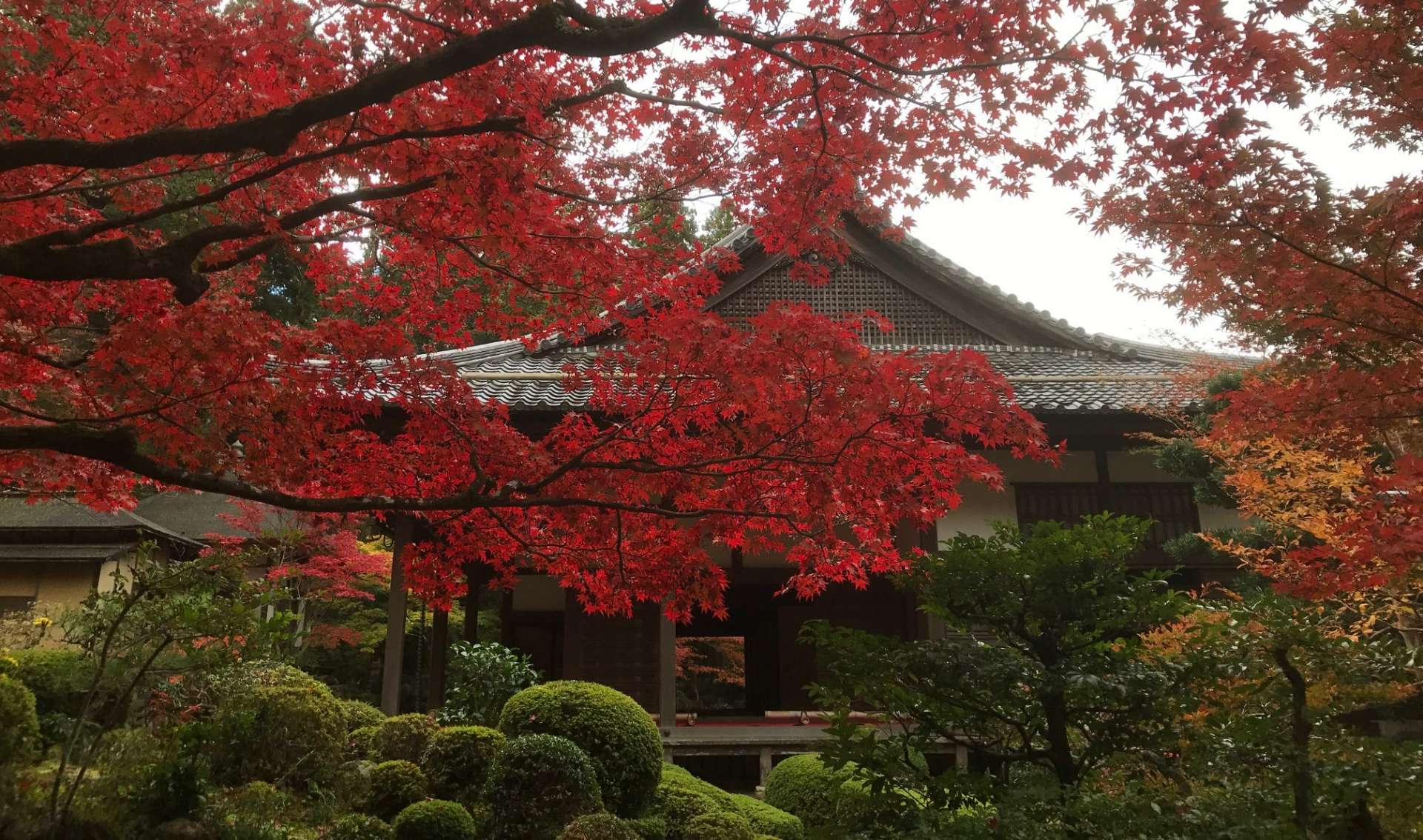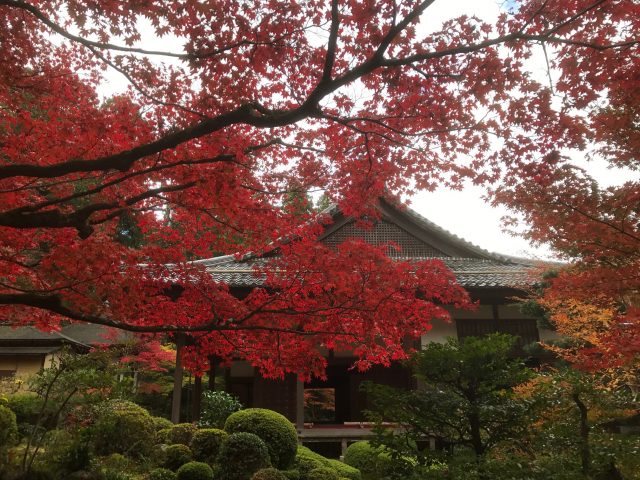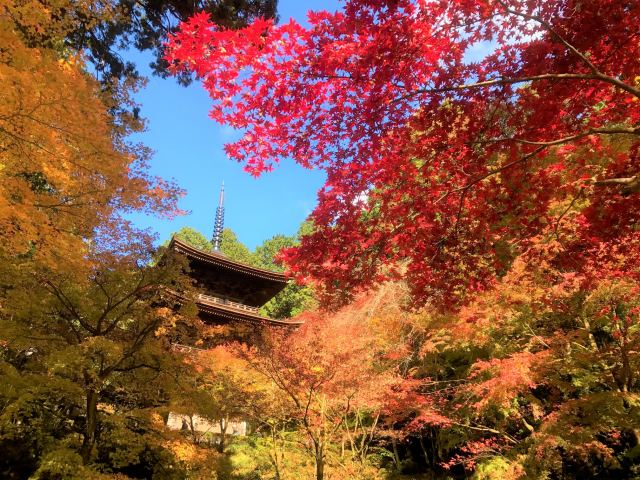很著名湖東三山之一,迴遊式庭園是日本桃山時代到江戶初期陸陸續續整修而成,不倫櫻花季節或者是紅葉季節都是很棒的地方。

Verified [Verified] denotes information that has been published with confirmation of its owing parties.
Tendai Sect Kongorinji Temple
One of the three mountains of Koto, famous for its autumn foliage, this temple was founded by Gyoki Bosatsu in the Nara period (710-794).
Along with Hyakusaiji Temple in Higashi Omi and Saimyoji Temple in Koura Town, it is one of the three mountains of Koto known as one of the best places for viewing autumn leaves in Shiga Prefecture. The temple of the Tendai sect of Buddhism was founded by Gyoki Bosatsu in 741 during the Nara period.
The main hall, Daihikaku, built in 1288 to commemorate the victory in the Battle of Genko in the middle of the Kamakura period (1185-1333), is designated as a national treasure as a representative Japanese and Western-style building of the Kamakura period. The three-story pagoda, built in 1246, and the Nitenmon Gate, built in the Muromachi period (1336-1573) and originally a tower gate, are also designated as important cultural properties.
In addition to the halls and towers, there are many other Buddhist statues designated as important cultural properties, such as the seated statue of Jie Daishi, the third head of the Tendai sect, and the statue of Daikokuten Hanka, the oldest traditional statue of Daikokuten in Japan. The main deity of the temple is Saint Kannon Bosatsu, a secret Buddha said to have been created by Gyoki Bosatsu, and it is said to be opened only once in a lifetime by the head priest.
The temple is also a popular spot for viewing the autumn leaves, and from the beginning to the end of November every year, the entire mountain, including the Japanese maple trees, turn red all at once, making the temple grounds a sight to behold. The main hall, three-story pagoda, and other precincts decorated with red leaves are full of photogenic scenery, attracting many visitors. In particular, the red leaves in the scenic garden, which consists of three gardens created in the Momoyama period (1573-1603), the early Edo period (1603-1868), and the middle of the Edo period (1603-1868), are said to be the most beautiful in the three mountains of Koto.
Highlights
-
The temple is located in the middle of the three mountains of Koto, famous for their autumn foliage.
-
The main hall, Daihikaku, is a national treasure, and there are 13 important cultural properties designated by the national government.
-
This temple is located in the middle of the three mountains of Koto.
Photos
-
![An ancient temple famous for its autumn foliage]()
An ancient temple famous for its autumn foliage
-
![An ancient temple famous for its autumn foliage]()
An ancient temple famous for its autumn foliage
-
![Three-storied pagoda, an important cultural property]()
Three-storied pagoda, an important cultural property
-
![Niten-mon Gate, an important cultural property]()
Niten-mon Gate, an important cultural property
-
![It turns red all at once from early to late November]()
It turns red all at once from early to late November
Reviews
-
Nelson Char
Details
- Name in Japanese
- 天台宗 金剛輪寺
- Postal Code
- 529-1202
- Address
- 874 Matsuoji, Aishocho, Echigun, Shiga
- Tel
- 0749-37-3211
- Closed
- No holidays
- Hours
- 8:30am-5:00pm
- Admission fee
- 600 yen
- Access
- 20 minutes by car from Inae Station on the JR Tokaido Main Line (Biwako Line)
- Credit Cards
- Not accepted
- Official Website
- Official Website (Japanese)





